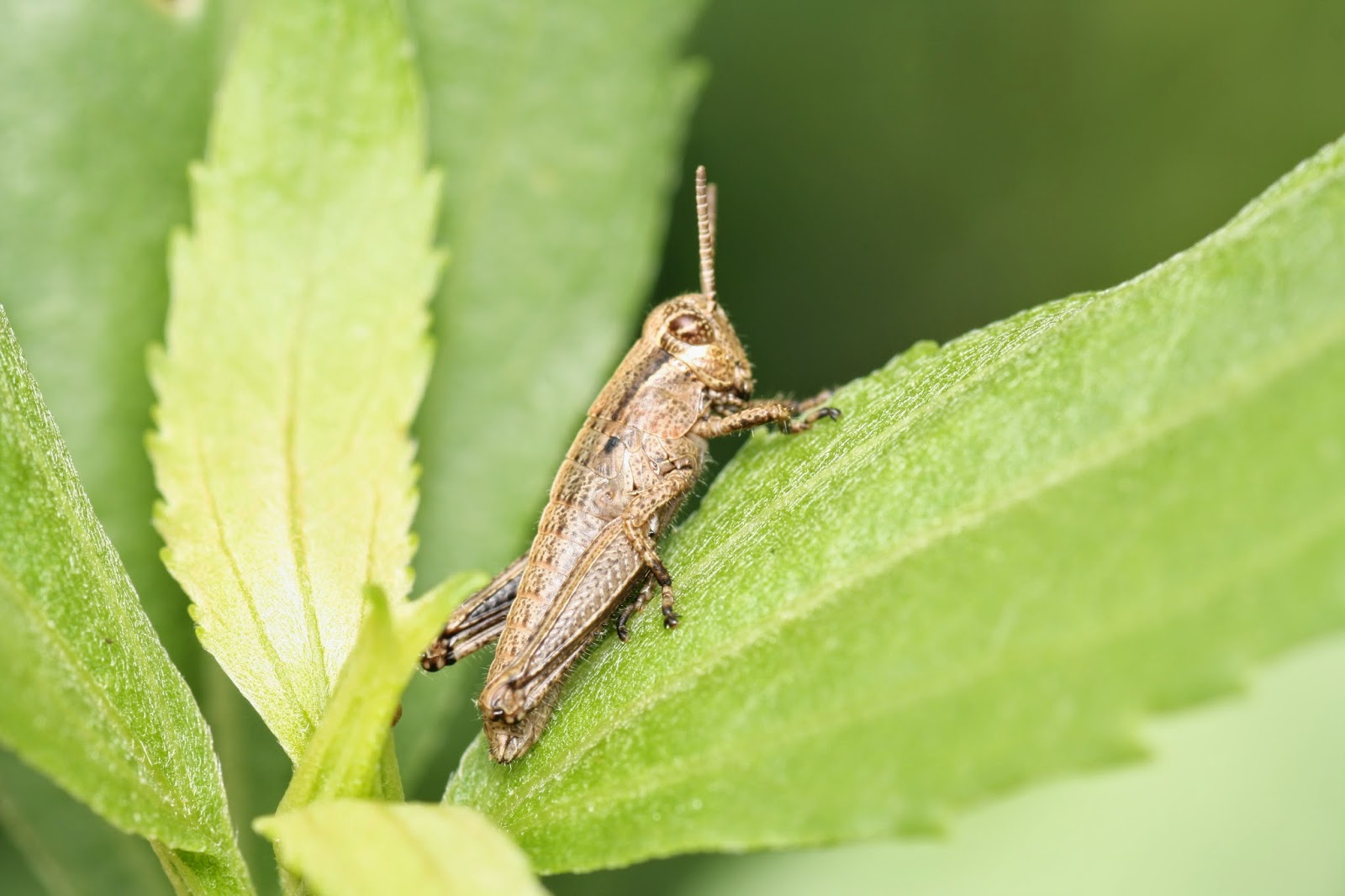Salt marsh elder, Iva
frutescens, is the most common broadleaf bush in the salt marshes. This
plant tolerates salinity but not frequent flooding, and is thus found at the
upper edges of the marsh or along mosquito ditches. As the only “real”
non-grassy plant and a relatively succulent one at that, Iva is attended by a
variety of herbivores and their predators unmatched anywhere else on the salt
marsh. Early in the season before predators and parasitoids catch up with them,
plant eaters = herbivores have the upper hand.
 |
| Damage by the end of the season in August |
Aphids are the most obvious due
to the sheer numbers. Brown ambrosia aphid (Uroleucon
ambrosiae) can reach astonishing numbers very quickly. The population
doubles in less than 3 days under optimal conditions. Like other aphid species,
most reproduction occurs without males, i.e. through parthenogenesis. Live
offsprings or nymphs are born every day.
When conditions on the plant become
too crowded winged aphids are produced that can disperse to new habitat.
Another common herbivorous sojourner is the chrysomelid leaf
beetle, Ophraella notulata. Unlike
the brown ambrosia aphid, this little beetle is Iva specialist rarely found on other plants. The larvae look very
fuzzy and are often seen in the company of aphids.
Paroxya
grasshoppers also consume Iva leaves
and are hard to detect. They prefer to hide by hunkering down rather than
jumping. The grasshopper coloration and small size allow almost perfect blending
in among Iva branchlets.
Research by
Steven Pennings group (http://www.esajournals.org/doi/abs/10.1890/10-0760.1)
determined that predators and competition (i.e. “top down”) exercise much more
influence on the aphids and the beetles than the plant resource (i.e. “bottom
up”).
Unidentified leaf beetle (Chrysomelidae)
As usual, the marsh is full of flies, little and large. Many
fly larvae feed on detritus abound in the salt marshes (which is in fact,
dominated by detritivores), or are predacious on other insects. This curious
fly (Taeniaptera trivittata) belongs
to the stilt-legged fly family and behaves very convincingly like an ant. I’ve
seen this fly species on the marsh. Is it possible that the larvae can survive
in the saline environment? Not much known about the adult habits, but this is a
very cool fly to watch.
Yet unidentified crane fly, a common sight early in the
season. Who are you, fly?



































